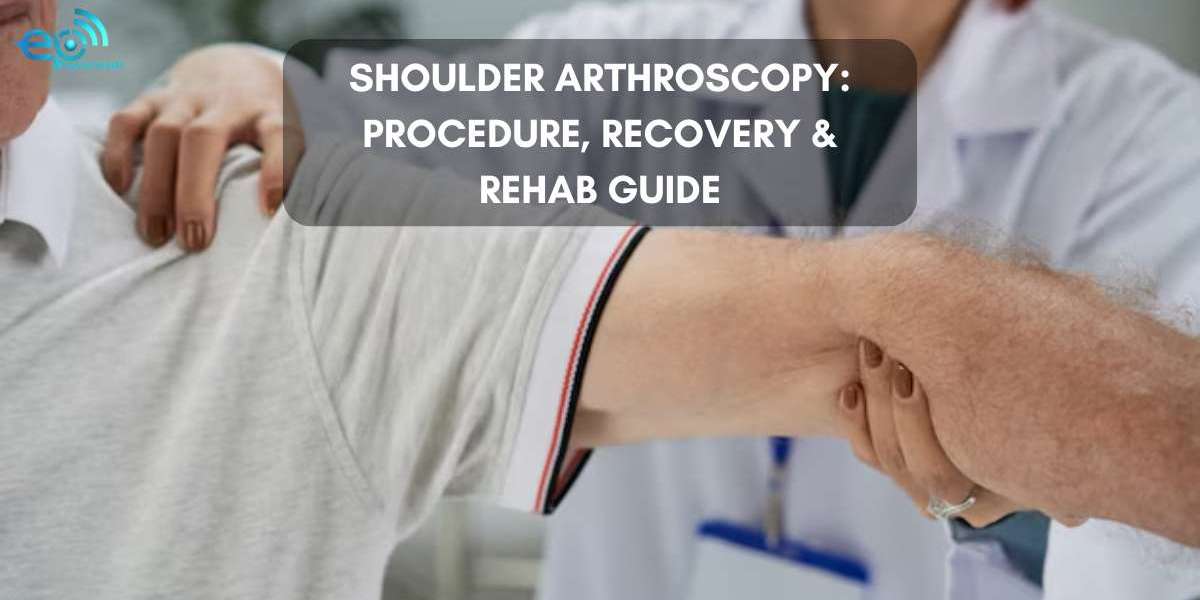Shoulder arthroscopy is a minimally invasive surgery used to diagnose and treat shoulder problems. One might have arthroscopy for rotator cuff tears or shoulder impingement. Minimally invasive procedures require smaller incisions than traditional surgery. Each incision is about the size of a keyhole.
What Shoulder Injuries Does Arthroscopic Surgery Treat?
- Biceps tendon injuries
- Frozen shoulder
- Labrum tears
- Rotator cuff tears
- Osteoarthritis
- Shoulder impingement
What Happens Before Arthroscopic Surgery?
Your doctor may ask you to undergo certain investigations prior to surgery, such as:
- X-ray
- Blood test
- ECG
Risk Factors and Complications
- Blood clots
- Damage to vessels and nerves
- Infection
- Excessive bleeding
PT Rehabilitation After Shoulder Arthroscopy
Goals
- Use of a sling for 1-2 weeks post-op unless otherwise indicated.
- Maintenance of good postural positioning when performing all exercises.
- Aerobic conditioning throughout the rehabilitation process.
- M.D. follow-ups on Day 1, 4 weeks, 3 months, 6 months, and 1 year.
- All active exercises should be carefully monitored to minimize substitution or compensation.
Week 1
Care & Manual Therapy
- Change dressings and review home exercise program.
- Soft tissue mobilization to surrounding tissues, effleurage for edema.
- Passive range of motion in all planes as tolerated.
Exercises
- Elbow flexion and extension, wrist and forearm strengthening.
- Cervical stretches, scapular squeezes, lower trap squeezes.
- Frequent movement of the elbow (10-15 reps each time) to minimize swelling.
- Cardiovascular exercises like stationary biking, elliptical (without arms), or stairmaster.
Goals
- Decrease pain and edema.
- Passive range of motion: Flexion and scaption to 90 degrees, external rotation to 30 degrees.
Weeks 2-4
- Nurse visit for stitch removal on Day 14.
Manual Therapy
- Continue soft tissue treatments, passive range of motion, scapular glides, light joint mobilizations.
- Pain control (cryotherapy, massage, electric stimulation).
Exercises
- Begin isometrics in all planes.
- Initiate active range of motion in all directions as tolerated.
- Scapular strength training exercises with theraband.
- General conditioning (including trunk flexion & extension exercises).
Goals
- Decrease pain and edema.
- Passive range of motion: Flexion, scaption to 120 degrees, external rotation to 60 degrees.
- Active range of motion: Flexion, scaption, abduction to 90 degrees with good mechanics.
Weeks 4-6
Manual Therapy
- Continue as needed for soft tissue, fascial, and joint mobility.
Exercise
- Progress strength training with weight-bearing exercises, theraband, and gym workouts.
Goals
- Achieve full passive/active range of motion.
Weeks 6-8
Manual Therapy
- Continue as needed for soft tissue, fascial, and joint mobility.
Exercise
- Continue to advance rotator cuff strengthening in multiple planes (wall ball dribbling, step ups/downs in plank, prone scapular strengthening with weights).
- Initiate light throwing-type activities.
Weeks 8+
- Initiate sport-specific training as tolerated without pain.
- Continue strengthening, endurance training, and overall fitness.
All progressions are approximations and should be used as a guideline only. Progression is based on individual patient presentation, which is assessed throughout the treatment process.







